Learning how to preserve basil in salt isn’t something I knew I needed to know how to do until now. Seriously, where has this been all my life? Fresh basil and savory tinted salt, all in one jar, all ready to marry up with my meats and sauces.
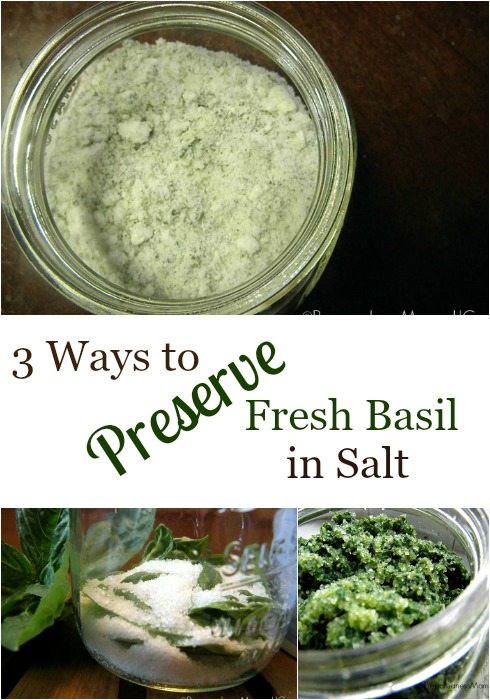
I had no idea you could preserve basil in salt, bacon and ham, yes, fresh herbs, never thought about it. My culinary side met my homesteading side and I knew this was a match made in heaven. In heaven ya’ll. Because my southern roots come out when I’m really excited.
Shelle graciously agreed to write us up a post on how to preserve fresh herbs in salt, not one way, but 3!! Yes, triple time coolest thing ever.
Resources for How to Preserve Basil
Wide-mouth Mason Jar
Fresh Basil
How to Preserve Fresh Basil in Salt
Salt has been used for centuries to dry and preserve foods. It pulls out the moisture from herb leaves and preserves the original flavor. Salt also inhibits the growth of microorganisms by drawing water out of microbial cells through osmosis. Concentrations of salt up to 20% are required to kill most species of unwanted bacteria.
This food preservation method works best on certain moist and tender herbs that are hard to dry. Herbs like basil and cilantro, that either mold before they are dry, or that dry to a flavorless leaf that does not resemble the freshness you are looking for.
In all cases, start this project with freshly picked herbs that have been cleaned and thoroughly dried. Store your finished herbal mixture in a clean glass container with a tight fitting lid. When using, always use a fresh, clean spoon to reduce introducing contaminates into your herbed salt.
What kind of salt?
I recommend either sea salt or kosher salt, but canning & pickling salt will work too. These are considered food grade and are courser than regular table salt. Using table salt is acceptable, but it should not contain iodine, which will darken the herb leaves.
Here’s the best answer I could find from the Penn State Extension office:
“Table salt is used for baking, cooking and normal table use. However, it is not recommended for canning recipes because the calcium silicate may cause clouding or settle to the bottom of jar. Furthermore, the iodide may discolor some foods. Neither of these effects makes the food harmful to eat. However, the visual quality of the product is adversely affected.
Canning and pickling salts do not contain potassium iodide, dextrose or calcium silicate and thus can be used for cooking, baking, canning, pickling as well as for the table. Because anti-caking agents are not added, it may form lumps in humid weather or if exposed to moisture and should be stored in an air-tight container or re-sealable plastic bag. Kosher salt is usually pure salt and thus is also appropriate for pickling and canning. However, check the label to make sure it does not contain additives.”
3 Ways to Preserve Fresh Herbs in Salt
These three methods are so east you will never need to buy herbed salt again!
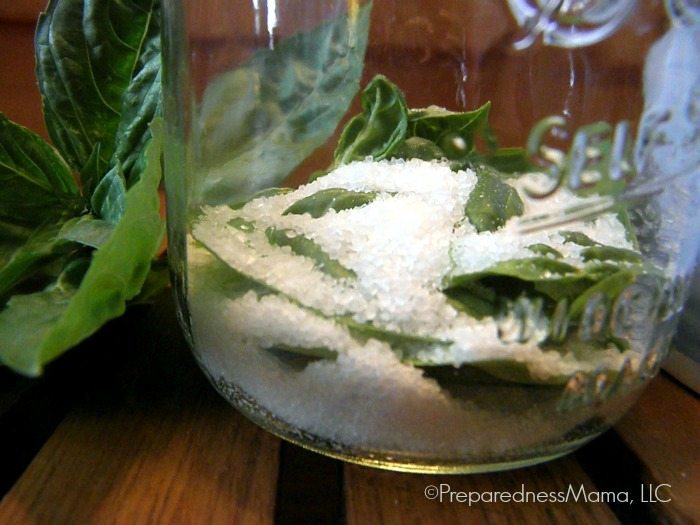
1. Alternating layers of fresh herb leaves and salt
This is by far the easiest method. In a clean glass jar add a layer of salt to cover the bottom. Add herb leaves in layers, alternating with the salt, until the container is full. Refrigerate.
The leaves will stay surprisingly fresh and flavorful for months. To use, just remove a leaf and brush off the salt. As an added bonus, the salt will become flavored over time and can be used in cooking too.
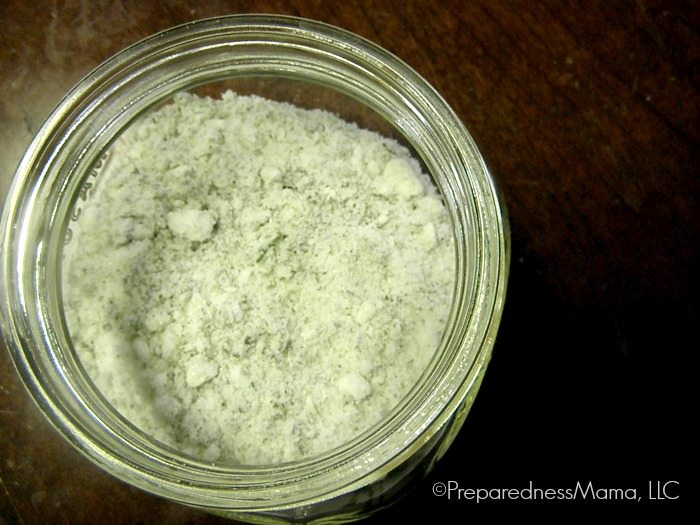
2. Grind & Dry Method
Use a ratio of 1 part herbs to 4 parts salt for the grind and dry method. Clean and dry fresh herbs and chop them into small pieces until you have 1/4th of a cup. Place them in a blender or food processor and add 1 cup of salt. Process until they are completely incorporated.
Lay the mixture out on a baking sheet and cover with a cloth, keeping it out of direct sunlight. After a day, place the mixture into a clean glass jar and cap tightly. Keep in the refrigerator until needed. It will last for one year.
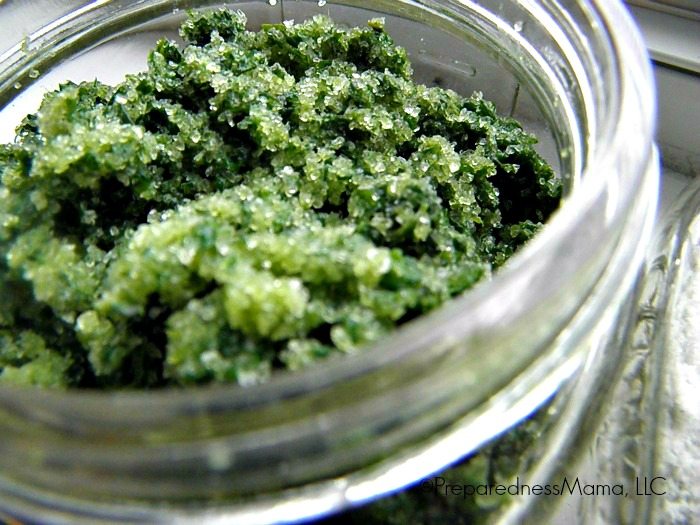
3. Chop & Stir Method
Use a ratio of 4 parts herbs to 1 part salt for the chop and stir method. Clean and dry fresh herbs and chop them into small pieces. You can add them to a food processor, coffee grinder, or glass bowl.
Add one part salt to the herbs, pulsing in the food processor for about 30 seconds. This will create a distinctly herb smelling salt that will take on the color of your herb. It is the most fragrant of the herbed salts we are making today.
Store your mix in the refrigerator and remove as needed. It will last for at least 6 months.
Which herbs work well for this method?
- Basil
- Celery Leaf (and try my homemade celery salt recipe)
- Cilantro
- Chives
- Dill leaf
- Lemon balm
- Parsley
- Rosemary
You can use it anywhere you would use herbs and salt, just replace the amount of salt required in the recipe. Consider using it in spaghetti sauce, stuffed fish, soup, savory baking, bread or rubs. Luckily, there are no hard and fast rules so experiment with your own herbal salt blends and enjoy!
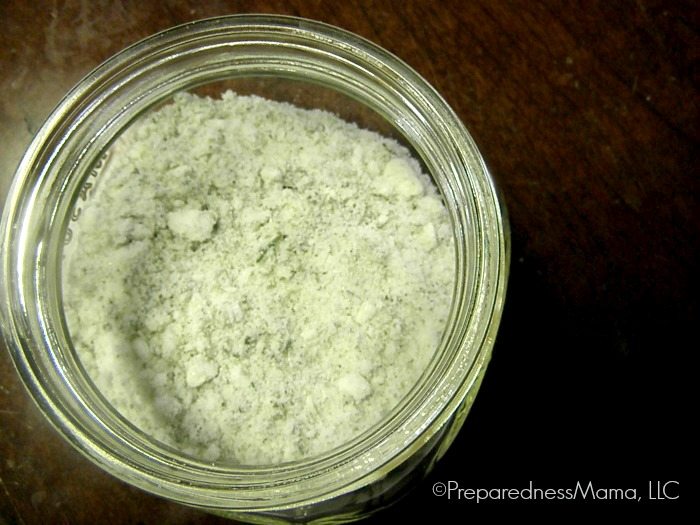
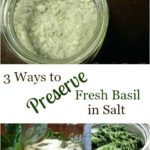
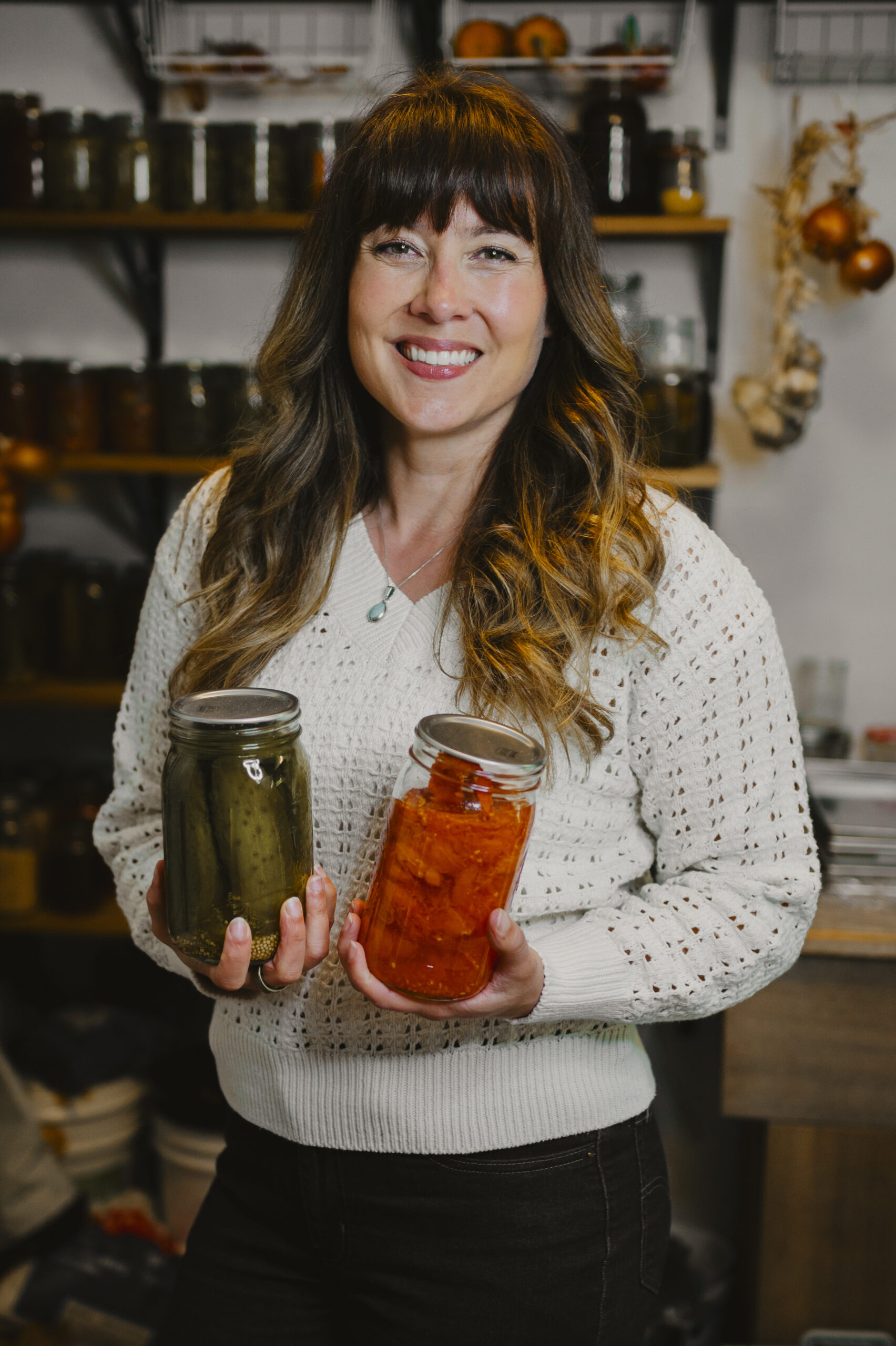

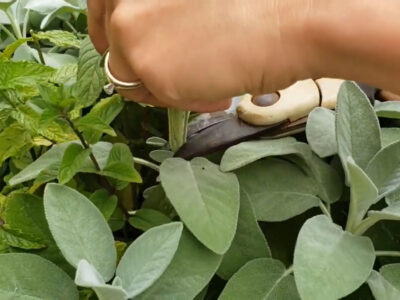
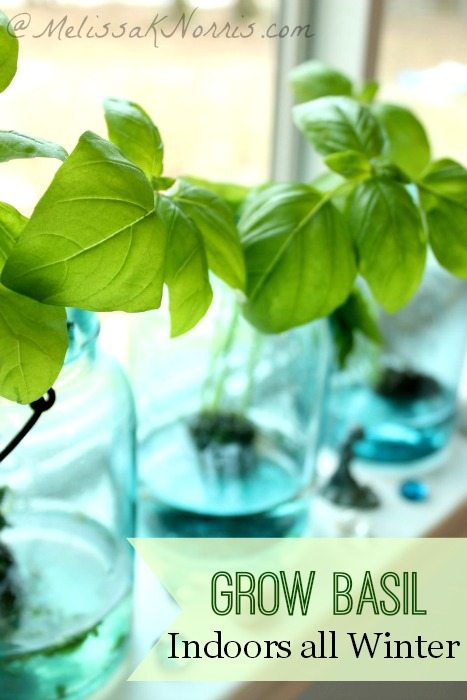
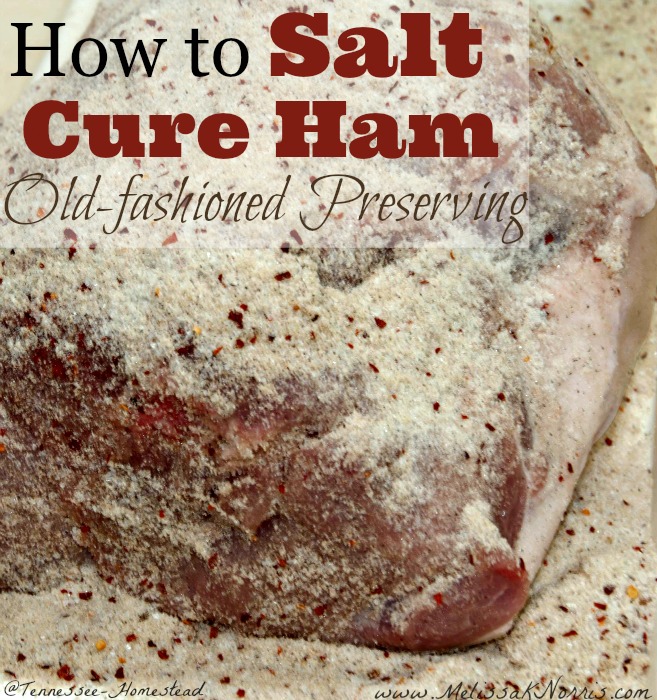
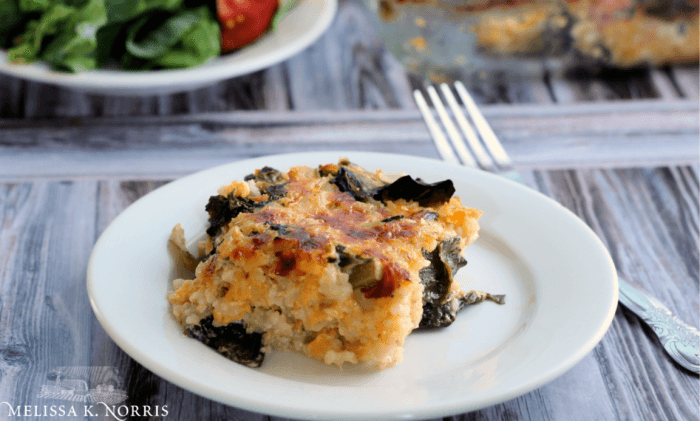
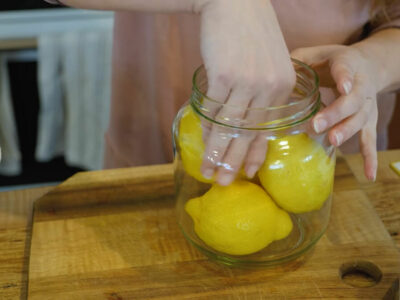
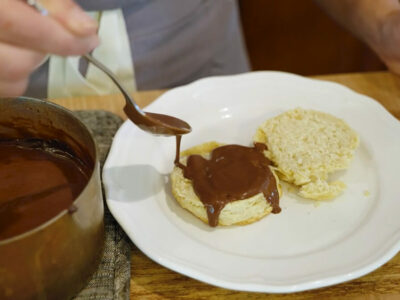
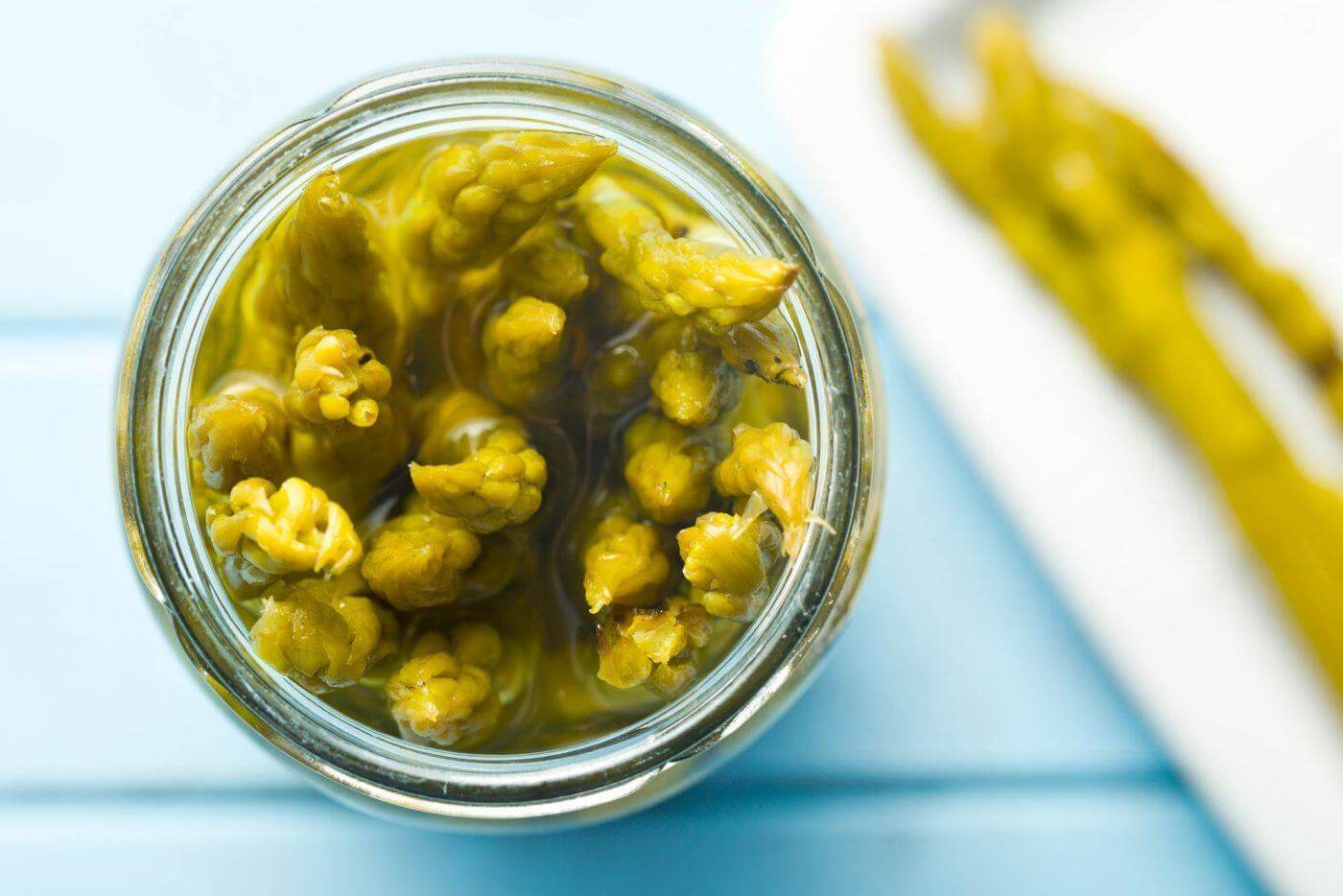

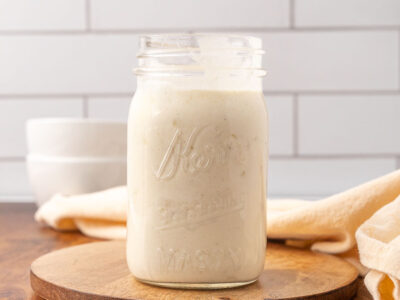
When you say “1-part herbs to 4-parts salt,” are you referring to weight or volume? In other words if I have 1/4 cup chopped basil, should I use 1 cup salt (measuring by volume)… or should I weigh the basil, and then use 4x that amount of salt (by weight)? Method #3 (chop and stir) does not provide a volume measurement for either the salt or the herbs, so the question of “weight vs volume” becomes even more important.
Could you please do a post on how you specifically use this? I have made this before and it is really lovely, but when I tried to use it I found the salt way overpowered the basil. Tried using with olive oil on pasta, put in broth for soup, etc. but by the time I could taste the basil everything was way too salty! I ended up throwing mine away.
why would you throw it away? just use it as unflavored salt in other recipes
I’m back again! Thank so much for the great tip! I have horseradish gowning in buckets out side; and the slugs love eating the leaves. I just went and harvested them patted them dry and covered them with Real Salt and hopefully they they will keep until I can Dill Pickles! I find that horseradish along with a small pinch of red pepper keeps them crisp and
firm!
In each quart jar add
1 tbsp brown sugar
1 tbsp course salt
7 cloves garlic
Several thinly sliced of Horse Radish
Add a small piece of horseradish leaf (optional, but adds crispiness
Do this before you fill each jar——This is an important step
4 dried red hot peppers *I also added a few dried red hot peppers
Brine
Fill 9 qt jars
9 C vinegar
12 C water *I found I needed more Brine to fill the jars.
Fill Canning KETTLE AND BOIL
TURN OFF STOVE
Set Jars in Canning Kettle and leave for 1 hour
Take jars out of Canning Kettle
Hope You enjoy the recipe
Lynnette
Thank you so much for all the wonderful tips ? I’m new at all this, but you guys make it fun! I’m definitely going to try this!
God bless
I love these types of lessons!
Just wondering why? So much salt????? 1/4 cup Basil to l cup salt? I understand salt for preserving .. But THATS A LOT OF SALT! So is this also for all herbs?? Chives, Mint Leaves, Parsley! ETC!!!!!
Lynnette
I have taught this method for about 20 years. Mary ann esposito showed it on her cooking show. It does work, no refrigeration needed. I used the salt, when empty of the herb for cooking.salt does not carry the flavor like sugar does.
These would make great Christmas presents, but basil is abundant in the summer. Can you freeze the finished product so when you give it at Christmas the recipient has the full six months of use?
Hi, I am wondering if for method 3, I can use a water bath canner, or pressure canner to seal the jars and make them shelf stable. I don’t have a lot of fridge and freezer room. Thanks, Beth
No, canning isn’t a method for preserving these
I hate to be a fuddy-duddy… but! Going by the instructions, the salt is NOT preserving the herbs, the refrigerator is… even the one where you air dry it before jarring it. I would have expected the herbs to be shelf stable. That is not the case with this ‘preservation’ method. This recipe is not one that I’d waste any salt on.
Yes, the salt is the preserving factor. Try putting straight basil leaves in the fridge and they’ll mold within weeks. My basil salt is good for 12 months! The salt absorbs the excess moisture preventing mold through osmosis. If you use the methods with more salt you can put them on the shelf, I prefer the stronger basil flavor and use the fridge method. I’ll have fresh basil flavored all year so I don’t consider it a waste at all.
Can you use pink Himalayan salt? I have a lot of it.
I have the same question!
I really liked there “jump to video”, “jump to podcast”, and “jump to printable recipe” buttons. Makes downloading the recipe for offline use much more functional. Wouldn’t mind being able to download the videos as well. We’re so far out in the boondocks that our internet connection is one bar of reception on the cell phone so anything that supports offline use is good.
I like mixed herbs best. Could I combine basil, cilantro, parsley and chives with the salt? In the same proportions, of course. Definately trying this !
THANK YOU for this fabulous information! I am going to preserve my rosemary and basil. I also have sage, thyme, and oregano.
QUESTION: Is it ok to combine some of these herbs in the same jar?
Thanks so much,
Stephanie Blume
Middletown, OH
Melissa, I have a question. Regarding preserving basil, in the video you said 1/4 c salt to 1 c basil chopped. Place in clean dry jar and store in fridge. In the link after your typed instructions, it states 1c salt to 1/4 c basil Then spread out on cookie sheet, cover with cheese cloth for a couple days til dry then store on countertop. I’m a little confused. Could you clear this up for me. Thanks in advance.
If you do the one with more basil than salt ratio it must be stored in the fridge, if you’re doing more salt to basil then you can do the cookie sheet one and store on counter top.
I loved this post so much I bookmarked it for later. My mom is an old-time cook and preserver and recently she dehydrated a bunch of jalapenos then ground them to powder and added the salt. Presto! Hot salt! It tasted amazing but it’s not for everyone. She did the same with habaneros and called it h*ll salt haha. Just wanted to share; try the jalapeno salt, it’s wonderful!
I absolutely love this idea for the tons of peppers that keep coming this year. Thanks for sharing!
These methods are easy and useful, but I must say, many people over use salt and their intake is way, way more than what the body needs and can tolerate without developing negative health side effects. And trust me, salt will harm you.
When it comes to preparing food and cooking, it’s important to be light with the salt and the herbs and non-salted seasonings are always healthier. People become accustomed and even addicted to salt and tend to use more in time.
Less is better, but that’s NOT to say that good healthy salt isn’t necessary like in extreme heat to prevent cramping. I’d use the processed table salt for cleaning purposes and stay with the sea salt, kosher salt, Celtic salt and the Himalayan which actually has health boosting minerals.
Also the salt used for preservation, could be put aside for convenience and then repurposed to feed animals such as those salt licks people put out for deer and other critters.
Thanks. I definitely will try today !!!
Great and easy. Thanks
Hi, Melissa, can the same process be done with sugar for those herbs like lemon balm that you might want to use in a sweet recipe?
Hi! I have a quick question…before making the recipe, when I wash the basil, does it need to be completely dry first, or just patted dry?
Thank you!
Patted dry is fine.
Melissa, where can I purchase the 10 pound of the “Real Salt” with minerals. Let me know, thanks.
Melissa, where can I purchase the 10 pound of the “Real Salt” with minerals. Let me know, thanks.
Hi…Made the 4parts salt/1part basil… WOW! love it. My basil is the best producer I have, this will prevent lots of waste and separated into 1 oz shakers with a red ribbon, will make a great addition to my Christmas goody baskets for neighbors 🙂
I did this last year with fresh garden basil, sage, and rosemary salts in little flip top jars for gifts to family members. I also included a jar of salsa and jam, plus some homemade vanilla extracts. It was the first year that I was happy with the Christmas gifts I gave to my family members. Usually when I purchase gifts for them I feel they are inadequate, these were a gift that represented me and my passions all bottled with love for each of them.
I used to feel my “canned” gifts were inadequate. I guess because they were basically free. My nephews and nieces (and recently my brother-in-law ) all rave about my gifted jars and have stated how much they look forward to the next Gift. My husband has no taste or smell (Parkinsons) so it is so nice to share my taste and smell with family.
Where did you get your flip top jars
Can I do the layering method on oregano sage tyme
I think it would work with any leaf herb!
Why do these need to be refrigerated?
It extends the shelf life.
As a person that grew up in a household where we canned, preserving food was just to get you through the winter. As soon as spring crops were ready you should have used up most of your preserved foods from the summer and fall. Our goods were never intended to be preserved for years. Just through the season cold months. My basil plant lasts all summer and into the fall. I like your salt preserve idea. I might use the same salt over and over to see how strong I can get it 🙂
Hi, I’m excited about this method of preserving herbs too! I have a question about the first method: Do you need to completely cover each layer of herbs with salt before you put in another layer? I did this, and it used an awful lot of salt for a pretty small amount of basil.
This is fantastic! Since I have two brown thumbs, I rely on those small refrigerated packages of fresh herbs…and even have to throw some of it away before I can use it all. This will be a time *and money saver! Would this work with sage leaves as well?
Dannie,
I don’t see why it wouldn’t… I’ve got sage growing, too!
Major game changer! I can preserve my basil and use it year round without worrying about freezer burn! YAY!!!
Major game changer! I can preserve my basil and use it year round without worrying about freezer burn! YAY!!!
When preserving the whole leaf in the salt, do you cover the jar with a lid? My husband will love having fresh basil during the winter. I am eager to try it with cilantro. Thank you.
I’d cover the jar with a lid in case of spills (I tend to be clumsy) and to keep anything from contaminating it.
I guess I have just one question. Since this is “preserving”, and this method has been used for centuries, WHY must the finished product be refrigerated?? If it really is “preserved” then it should require NO refrigeration in order to stay viable…I’m thinking that our great great grandparents didn’t ‘refrigerate’ something like this, as they had none!!!
Just wondering!
Thanks for this article!
I’m wondering about having to refrigerate it, too!
Will definitely be trying #1! Thank you!
Isn’t it genius, Jill? I’m so excited to try these myself.
What if I freeze dried the salt this way and didn’t have to refrigerate?